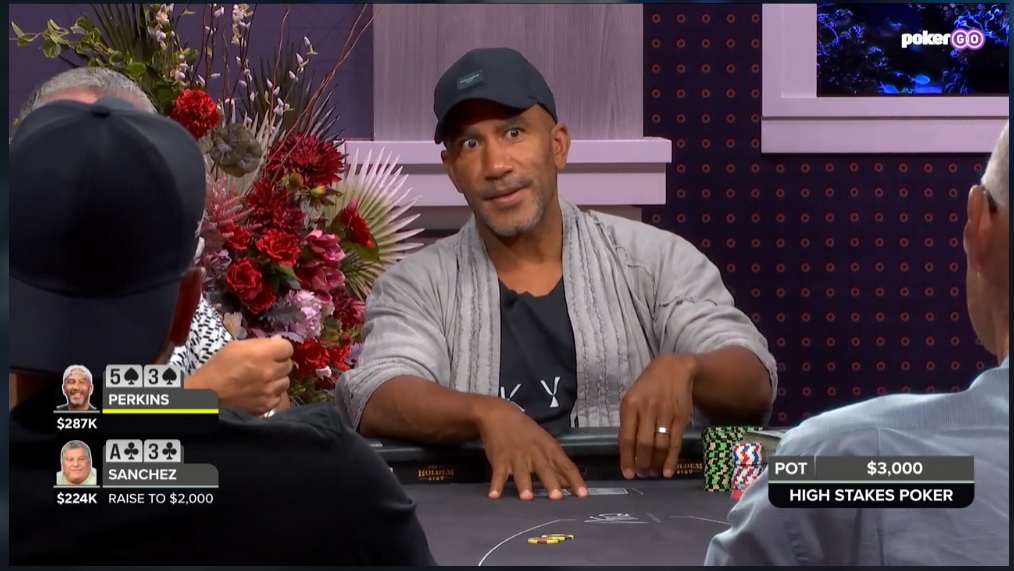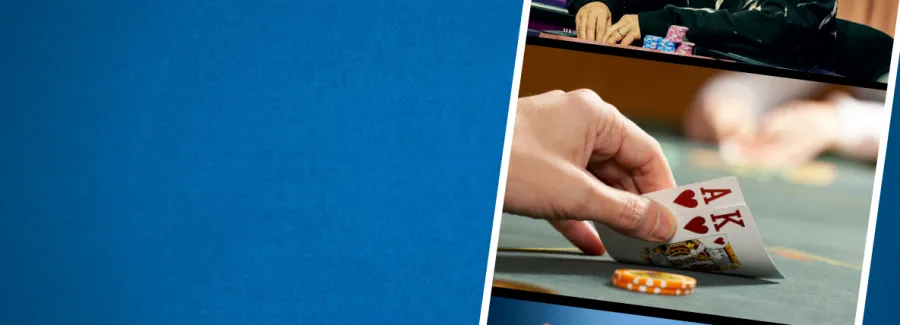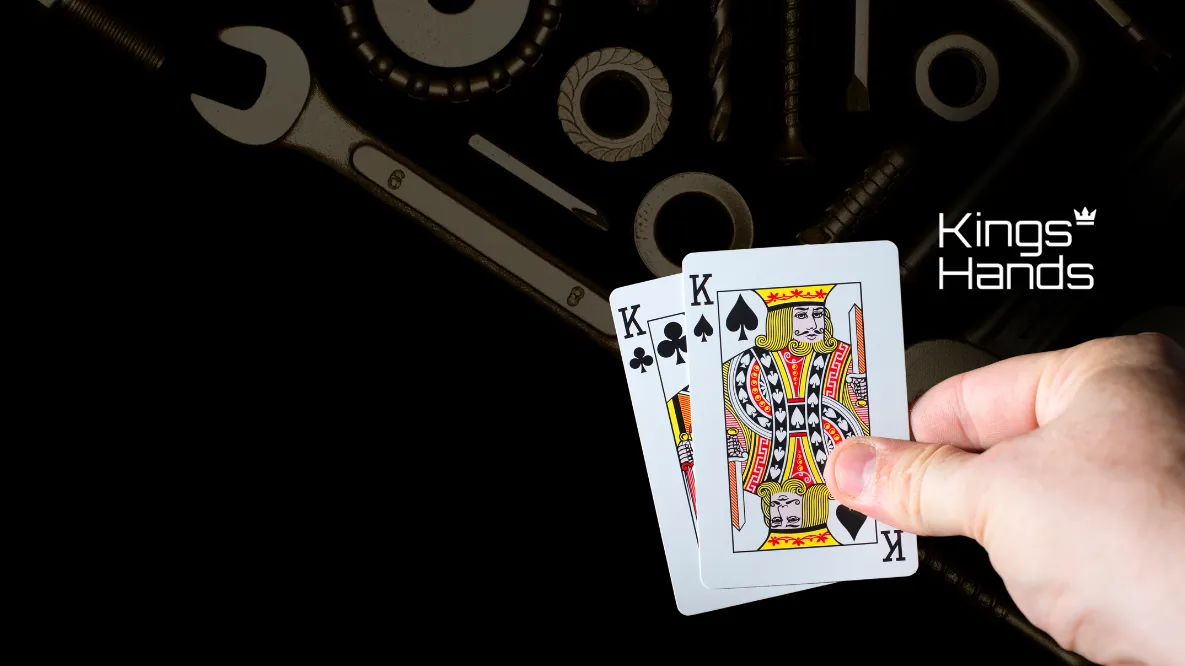The hands are an extremely important part of playing live poker. For most players, they’re the way we look at our cards, manage our chips, and make our bets. As they play such an important role in the mechanics of the game, there are many tells that we can pick up from them if we look closely enough.
In Part Five of our Poker Tells series, we’ll be looking at the most common hand-related tells you can spot at the poker tables, how you can spot them, and how you can use them to your advantage at the poker table.
Shaking Hands at the Poker Table
The “shaking hands” tell is an extremely common tell in low-stakes poker games. The majority of the time, when a player’s hands are shaking, it’s not because they’re nervous; it’s because they have a huge hand and can’t contain their excitement. They’re feeling a rush of adrenaline as they know they’re going to potentially win a huge pot, and this adrenaline rush is what causes their hands to shake.
This tell is most commonly found in inexperienced players who aren’t used to playing live poker, as they’re unable to regulate their emotions while they play. People who regularly play live poker are able to suppress this feeling at the tables, which means it’s unlikely you’ll see an experienced player ever give off this tell. However, that doesn’t mean that someone more experienced won’t try to throw it in as a fake tell, so it pays to watch your opponent closely to see if they’re displaying genuine shakiness or if they’re just putting it on.
How Do I Counter It?
So, if your opponent looks like they’re about to drop their chips while making their bet, what should you do? Well, as this tell is a great indicator of strength, we should respond by playing tighter against their bets and raises. You should be calling a tighter range and greatly reducing the number of bluffs you have in your range – if not eliminating bluffs altogether.
The more confident you are in this tell, the more you can adjust your range to exploit your opponent. If you’ve seen this player’s hands start to shake every time they have a big hand, you could even go as far as folding all of your hands that aren’t monsters. However, this requires a lot of trust that your read is correct, so don’t start making these big changes to your range without a strong idea that this tell is genuine.
Picking up a Handful of Chips When You’re Making Your Decision

If you’ve played live poker before, it’s likely that you’ve come across this tell without even realising it. Many people don’t think to look at their opponents for tells when it’s their turn to act, but there’s a lot you can pick up if you look closely enough. This tell is an example of the classic “look strong, is weak” psychology. They can see that you’re considering making a bet, so they pick up a big handful of chips as a show of strength – as if to say, “I’m calling, no matter how big your bet is.”
However, in reality, the opposite is true; they’re not ready to call a bet, and they’re hoping that this show of strength will intimidate you into making a passive action. With this tell, it’s important to gauge your opponent’s body language to ensure that it’s accurate and not just a random coincidence.
For example, if your opponent is studying you while you’re thinking and then decides to pick up a big stack of chips as you start reaching towards yours, they’re likely giving off this tell. On the other hand, if they’re watching a football game on the TV and grab a handful of chips to start shuffling with, they’re likely not giving off this tell. This will probably point to the “attentiveness at the table” tell, covered in Part 1.
How Do I Counter It?
This tell is designed to intimidate you into a passive action, so the easiest way to counter it is to do the opposite of what they want you to do and make an aggressive action. However, we can get more nuanced than that.
If you have a bluffing hand, the best thing to do is pull the trigger, as it’s very likely they’ll fold to a bet. Upon seeing this tell, I’d recommend increasing your bluffing frequency to take advantage of the likely increase in fold percentage. However, if you have a very strong hand, you may want to check to try and let your opponent catch a card they need on a later street. By doing this, you let your opponent improve to a hand that could pay you off on the turn or river, giving you a much bigger pot with your strong hand.
Attempting to Turn Their Hand Over Prematurely
Anyone who watched Jamie Gold’s infamous run to the 2006 Main Event title will have seen this tell in action on the biggest stage in the world. When pulling it off, the player will pretend to attempt to turn their hand over early, as if their bet has already been called, when it hasn’t.
This apparent eagerness to show their hand is supposed to be a show of strength; after all, if someone’s bluffing, why would they be so eager to show their hand at showdown? In reality, the opposite is true, and it is all an elaborate ruse to trick you into thinking their hand is much stronger than it is.
It could be argued that this is less of a tell and more of a psychological tactic used to try and deceive you into thinking you have the worst hand. As such, it’s one you’ll tend to see used most often by experienced players, as they’re the only ones confident enough to try and pull off such a move.
However, you may come across an inexperienced player accidentally doing this at the tables, as they often don’t know when exactly they should and shouldn’t show their hands. Therefore, it’s important to have a grasp on what kind of player your opponent is before deciding how much stock to put in this tell. A good rule of thumb is the more experienced the player, the more likely it is this tell is a show of weakness, and the less experienced the player, the more likely this tell is a show of strength.
How Do I Counter It?
Countering this tell will depend on exactly what kind of opponent you’re facing. If you’re facing an experienced opponent and you see this tell, it’s likely they have a much weaker hand than normal. This means that we want to exploit them by widening our calling range and playing back at them more aggressively than normal.
However, if you’re playing against an inexperienced opponent who is most likely genuinely eager to show their hand, they probably have a much stronger hand than normal. This means we can exploit them by folding more of our range and only calling the strongest parts of our range.
Rubbing Their Face, Arms, or Neck
Like many of the tells in this series, this is one that you can see in your day-to-day life if you look closely enough. Repeatedly touching or rubbing one’s face, arms, or neck is a common way to manage anxiety and is known as self-soothing. It is thought that the repeated touching of these areas activates the parasympathetic nervous system, which helps to relieve symptoms of anxiety and stress.
So, what does it mean if you see someone exhibiting these self-soothing techniques at the table? Well, if they’re trying to manage their stress and anxiety levels, it’s likely they have a weaker hand than usual, as those are the situations where players often feel the most stress. However, due to the ease at which these tells can be faked, it’s important to understand the type of player you’re playing against.
The more experienced a player is, the more likely they are to be aware of this tell, and use it in a situation where they’re strong rather than weak, and the less experienced a player is, the more likely it is this tell is genuine. When trying to use tells to inform your decision-making, it’s best to avoid guessing as much as possible, so rather than getting into a levelling war with an experienced player, just focus on using this tell against inexperienced players who don’t realise they’re doing it.
How Do I Counter It?
If you stick to using this tell against inexperienced players, it’s likely they have a weaker hand on average. Therefore, we can exploit them by widening our calling range against their bets and playing more aggressively against their passive actions.
However, it’s important to gauge exactly how strong this tell is for your specific opponent before widening your range too much. Start by making small adjustments to your range, and when you grow more confident in this tell, you can start making larger adjustments to exploit your opponents.
Summary
While poker is a game of the mind, in live poker, you still need to execute your actions if you want to play the game. Someone may have completely mastered poker strategy, but will still give away subtle clues as to the strength of their hand through their actions at the table. This is why studying your opponents, and specifically their hands, is so important, as players often unknowingly betray their emotions through their actions. By using the tells in this article, you’ll be able to exploit your opponents who cannot control their emotions at the table, giving you an edge and potentially increasing your win rate.
Join us in part six of this Poker Tells series, where we’ll be talking all about the legs and feet. Make sure you join our PokerDeals Facebook group or follow us on Instagram to be notified of the next article in the series.
*Image courtesy of PokerGo





















